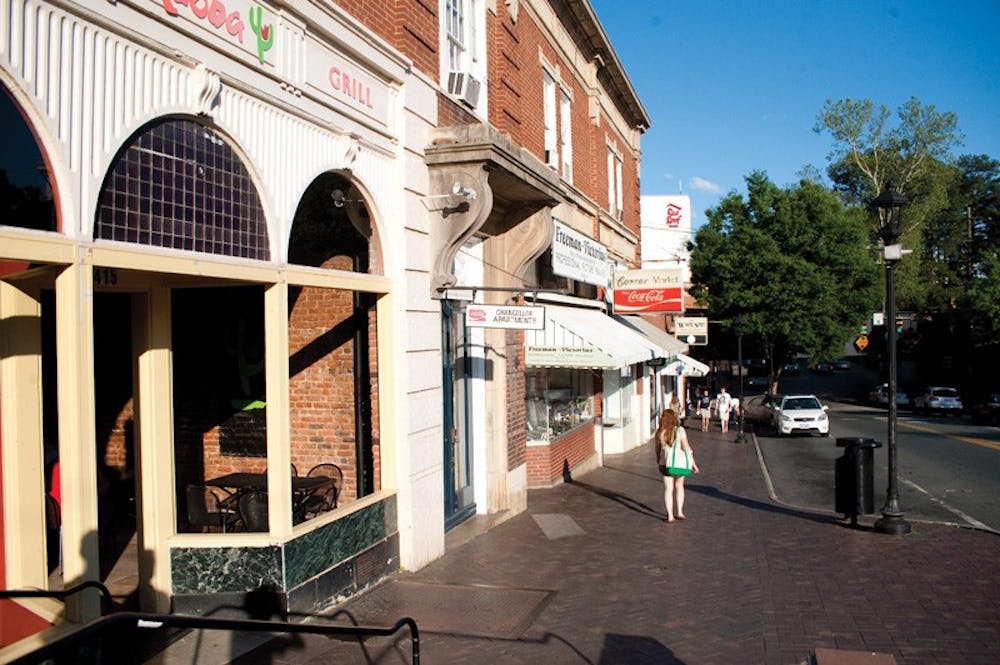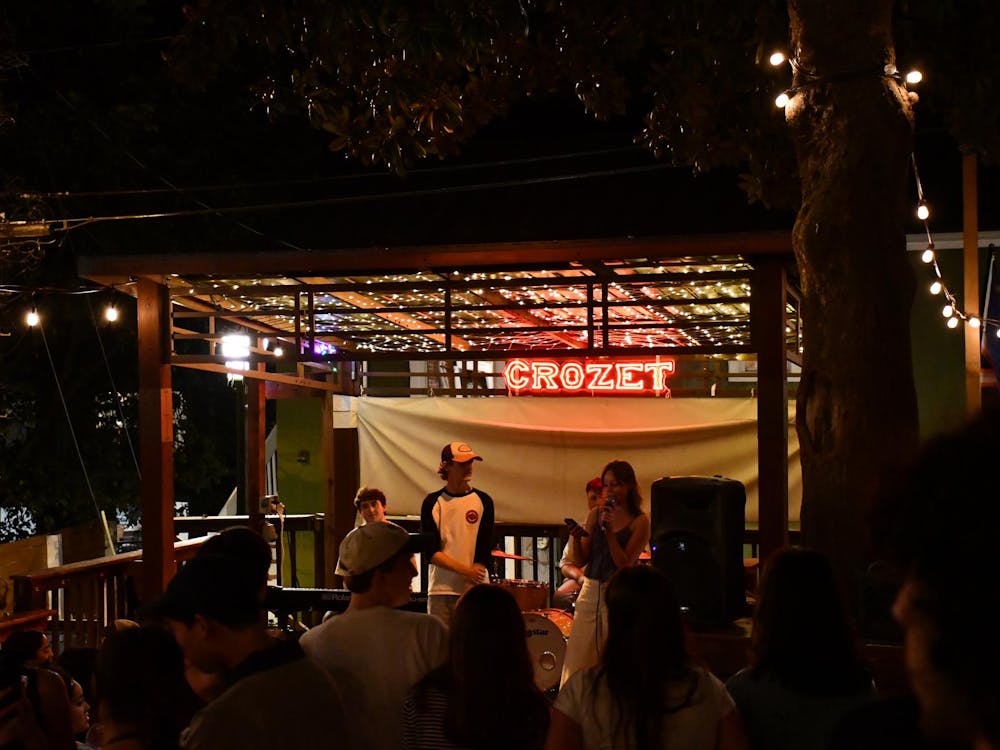The Corner Fraternity
The bright-eyed J.R. Hadley could easily be mistaken for a brother in a Rugby Road fraternity, with a baseball cap complementing his calculated 5 o’clock shadow.
But Hadley is in a different sort of fraternity. As co-owner of Boylan Heights and the recently opened Toro’s Tacos, Hadley is a part of a new generation of young entrepreneurs buying up properties along the Corner, often making drastic changes to the restaurants or shops that were there before.
After Hadley acquired Boylan in 2008, he worked to implement several changes: cleaner seating areas, high-definition televisions galore and organic beef and turkey in the restaurant’s signature burgers.
The focus on quality ingredients is a product of Hadley’s past, mimicking the organic and local trend he watched grow while a resident of Lake Tahoe.
A fellow member of the Corner restaurant owner fraternity is Chicago native Ryan Rooney.
Rooney is the co-owner of Trinity Irish Pub, which he bought with his partner Kevin Badke four years ago; Coupe Deville’s, which he acquired two years ago; and the recently opened Charlottesville branch of Crozet Pizza.
Student tastes are always in flux, and restaurants on the Corner must have their finger on the pulse of students’ wants if they hope to stay competitive, Rooney said. “Kids are more in tune with what they’re putting in their bodies,” he said, echoing Hadley’s insistence on quality ingredients. Craft beers and high-end bourbons and vodkas are also must-haves in the current student market, Rooney said.
But even today’s seemingly unshakeable love of high-end food and drinks might change. In order to survive, Corner owners must “stay in tune with the Greeks” — the lifeblood of the Corner’s continuing success — Hadley said.
The group “started hanging out at Boylan’s,” Hadley said, and they are constantly learning from each other’s successes, improving their own businesses by borrowing techniques and features from the others.
A Changing Business Environment
“It has changed,” said Nicole Hamilton, co-owner of St. Maarten’s Café, of the Corner’s business environment. “Back in 2000 there were not very many bars.”
According to “The Corner Workshop,” a 2005 report on Corner activity hosted by the University Office of the Architect, which included neighborhood representatives, Corner merchants, and University staff and students, “change in use [of the Corner] over time has resulted in a bar/restaurant emphasis as opposed to essential goods and services.”
St. Maarten’s, among the larger restaurant/bars on the Corner, is one of the few where the owners own only a single property.
Established in 1985 by Jim and Linda Roland, St. Maarten’s was faced with the unsavory prospect of closing until a group of loyal customers rallied funds. It was bought by Russ and Nicole Hamilton in 2012, two long-time workers at St. Maarten’s with a combined total of 30 years of service to the restaurant.
Long-standing restaurants and businesses such as St. Maarten’s are perhaps part of the Corner’s quaint charm. “Charlottesville as a whole… likes its niche places,” Nicole Hamilton said. “[The population] likes its local businesses, … likes the small-town feel.”
But charm alone does not a successful business make — the competition on the Corner is fierce, and it shows signs of increasing. “There is more competition than ever before,” Nicole Hamilton said.
Indeed, the shelf-life for some restaurants can seem surprisingly short.
Pita Pit, which opened in January 2011, went out of business last year, and Big Dawgz, which opened in March 2012, went out of business in less than a year.
Even long-standing businesses are not exempt from the pressing demands of economic competition. Baja Bean, established in 1992, closed for business last spring.
Part of the reason may be an increase in the number of competitors: in 2000 there were 26 restaurants and diners on the Corner; now there are about 33.
Numbers also come into play when owners consider the number of businesses they manage. Economics of scale may be making it harder for single-venue owners, Nicole Hamilton said — owners of multiple establishments can cut costs by ordering in bulk.
But the new wave of young entrepreneurs say competition is the name of the game, and the restaurants that are going out of business, Hadley said, were bad concepts for restaurants to begin with.
Rooney put it more bluntly, “Pita Pit sucked.”
A Student’s Environment
If anything, Rooney said, increased competition and turnover of owners leads to improved food quality and service.
Rooney said that owning multiple venues is not the same thing as “going corporate,” and he brushed aside the concern that consolidated ownership would make restaurants stagnant or lose their local flair.
“[The Corner] is in safe hands,”Hadley said of the new guard of restaurant owners.
In fact, Hadley said Charlottesville’s Corner is relatively unique among college town centers. In most places bar owners are older, he said, and they dictate what kinds of dining experiences students will receive. “[In Charlottesville,] it’s the opposite… it’s all about UVa [students],” he said. “Whatever trend they set, we adapt to that.”
The 2005 Office of the Architect report concurs, citing the examples of Harvard and Columbia whose Corner-like areas “consist largely of national chains rather than locally-owned businesses.”
So the unique identity of the Corner may be safe. As Hadley puts it, though the faces may change, the restaurants will improve, and “a rising tide lifts all ships.”







